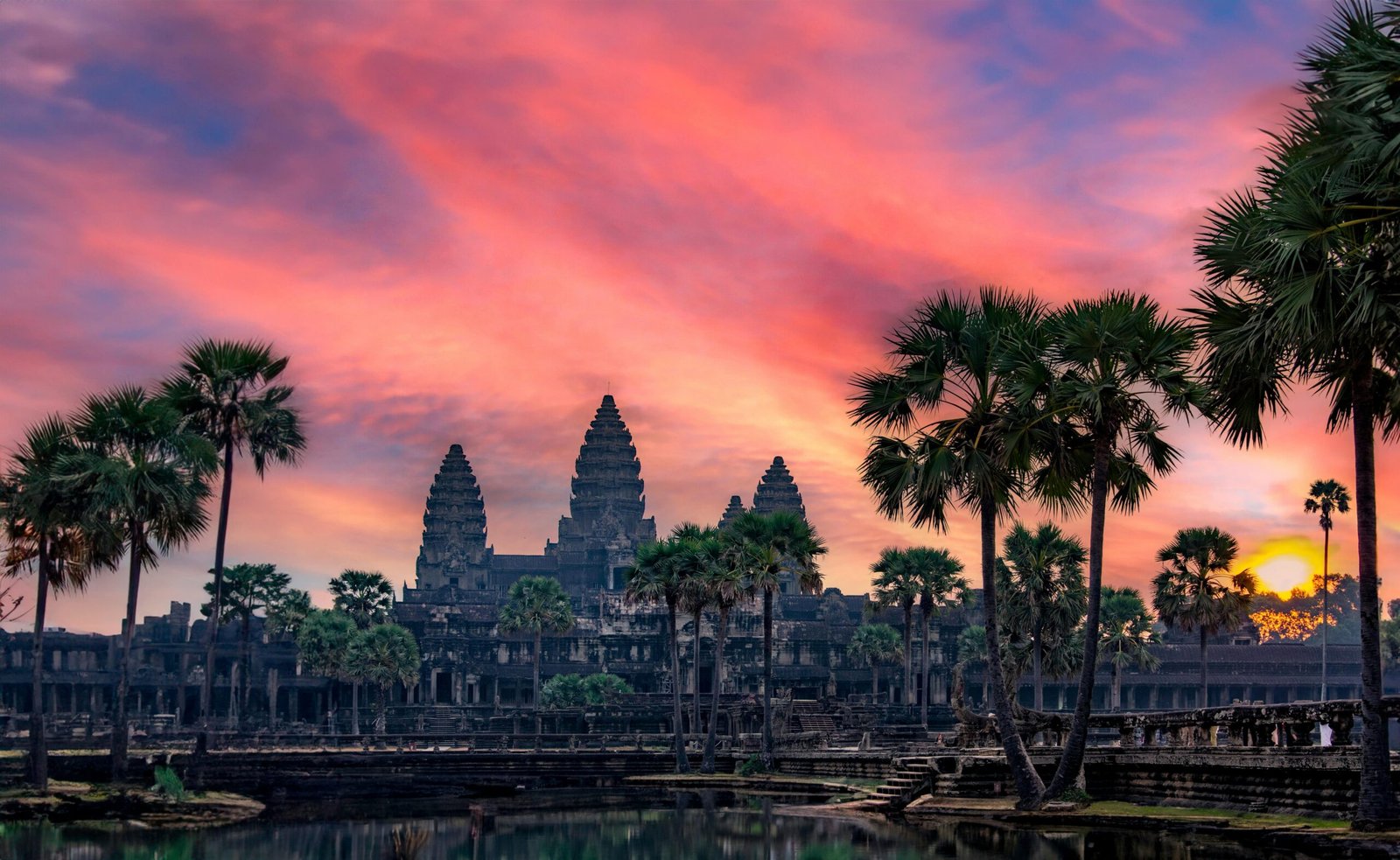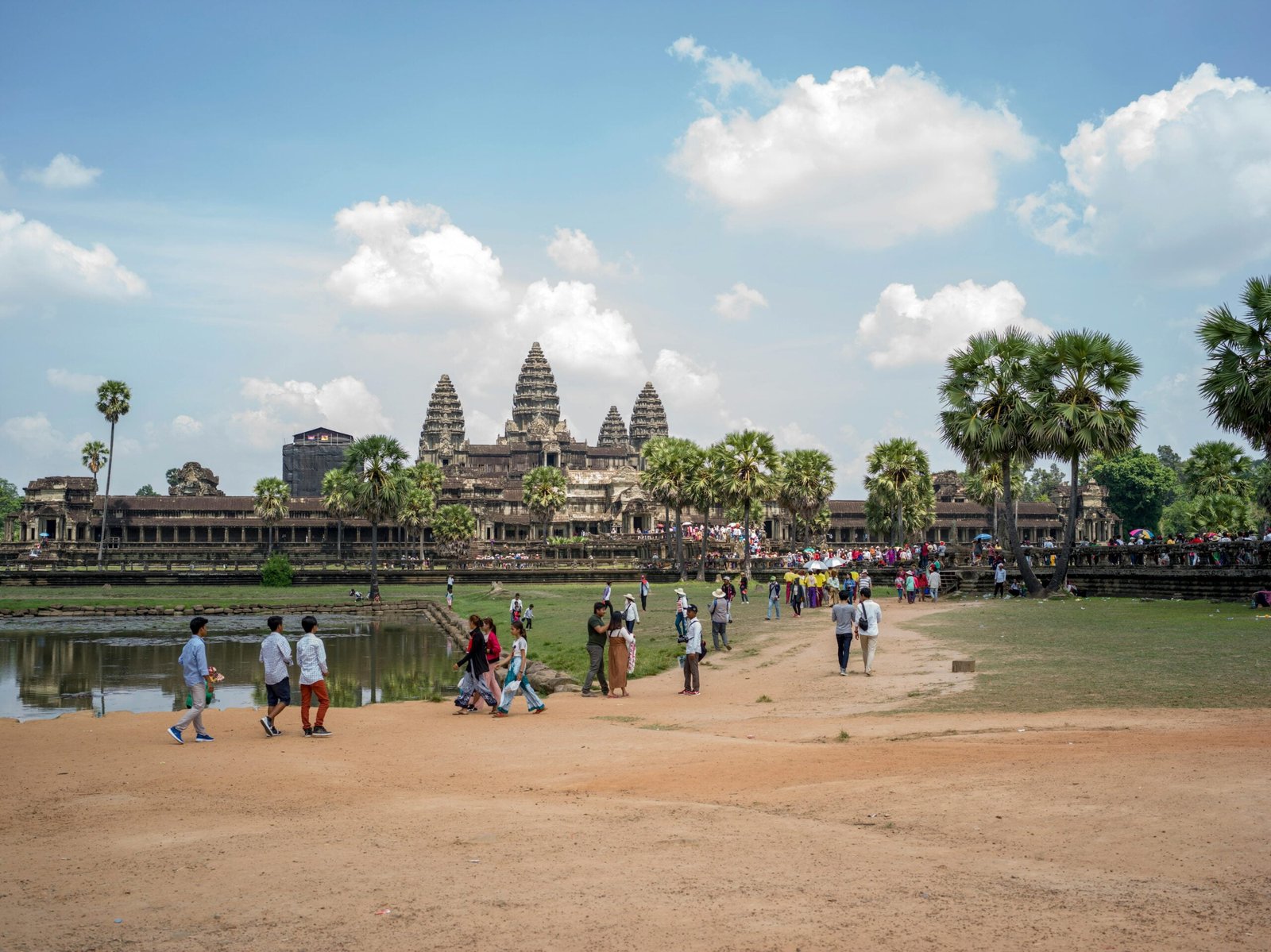
Explore the Secrets of Angkor Wat Hindu Temple: A Journey Through History
Angkor Wat Hindu temple, the largest religious monument in the world, is a symbol of Cambodia and an architectural marvel of the ancient Khmer Empire. Its grandeur and mysteries have captivated historians, archaeologists, and travelers for centuries. This article delves into the known secrets of Angkor Wat, exploring its architectural wonders, historical significance, and the enigmatic aspects that continue to intrigue the world.
The Majestic Architecture of Angkor Wat
Construction Techniques
The construction of Angkor Wat is a testament to the ingenuity and skill of the Khmer architects. Built in the early 12th century by King Suryavarman II, the temple complex showcases advanced engineering techniques. The sandstone blocks used in its construction were transported from the Kulen Mountains, over 50 kilometers away. The precise alignment and interlocking of these stones without the use of mortar is a remarkable feat, highlighting the expertise of the craftsmen.
Symbolism in Design
Angkor Wat’s design is a symbolic representation of Mount Meru, the center of the universe in Hindu and Buddhist cosmology. The five central towers symbolize the five peaks of Mount Meru, while the surrounding moat represents the cosmic ocean. This architectural symbolism underscores the temple’s purpose as a spiritual and cosmic center.
Historical Background
Origins of the Temple
Originally dedicated to the Hindu god Vishnu, Angkor Wat was constructed as a state temple and mausoleum for King Suryavarman II. Its purpose extended beyond religious devotion; it was also a display of the king’s divine right to rule. The temple’s shift from Hinduism to Buddhism in the late 12th century reflects the religious and cultural transitions of the Khmer Empire.
Religious Significance
Angkor Wat served as a crucial site for religious ceremonies and royal rituals. Its expansive galleries and courtyards accommodated large gatherings, making it a hub for spiritual and political activities. The temple’s continued use and transformation into a Buddhist site further cement its religious significance over the centuries.
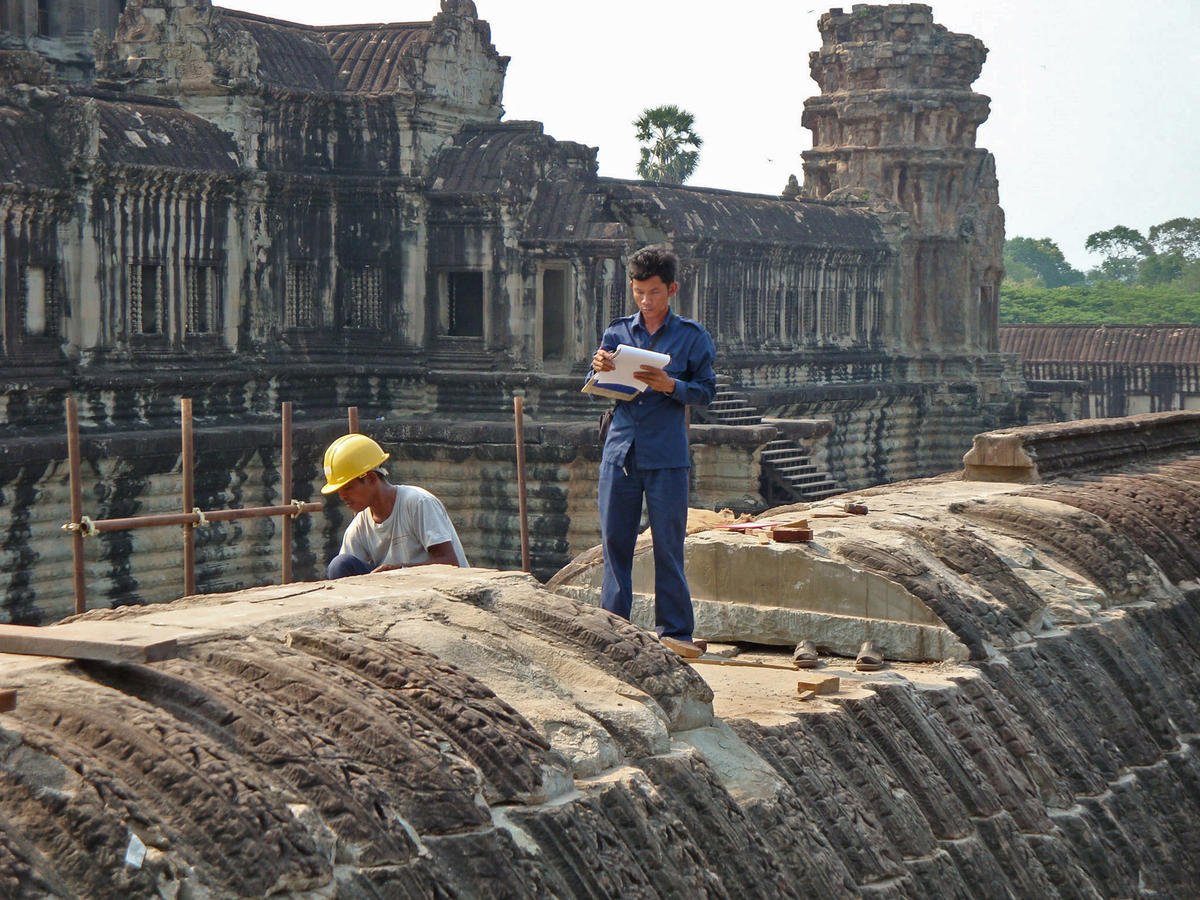
The Role of French Archaeologists
Angkor Wat was largely forgotten by the world until its rediscovery by French explorer Henri Mouhot in the mid-19th century. French archaeologists played a pivotal role in documenting and preserving the site, initiating conservation efforts that continue to this day.
Modern Conservation Challenges
The preservation of Angkor Wat Hindu temple faces numerous challenges, including environmental degradation, tourism-related wear and tear, and the threat of theft and vandalism. Efforts by international organizations and the Cambodian government aim to balance the site’s preservation with sustainable tourism.
To revive Cambodia’s rich historical and cultural traditions, the WMF created the Center for Khmer Studies, a lasting international research and training center designed to foster knowledge exchange between Cambodian and international scholars. Additionally, WMF launched a comprehensive program focused on conservation, training, and education, targeting four significant sites: the Churning of the Ocean of Milk Gallery at Angkor Wat, known for its prominent bas-relief; Phnom Bakheng, one of Angkor’s oldest temples; Preah Khan, a remarkable large temple complex nestled in the jungle; and Ta Som, a smaller temple complex celebrated for its intricate architectural and sculptural details.
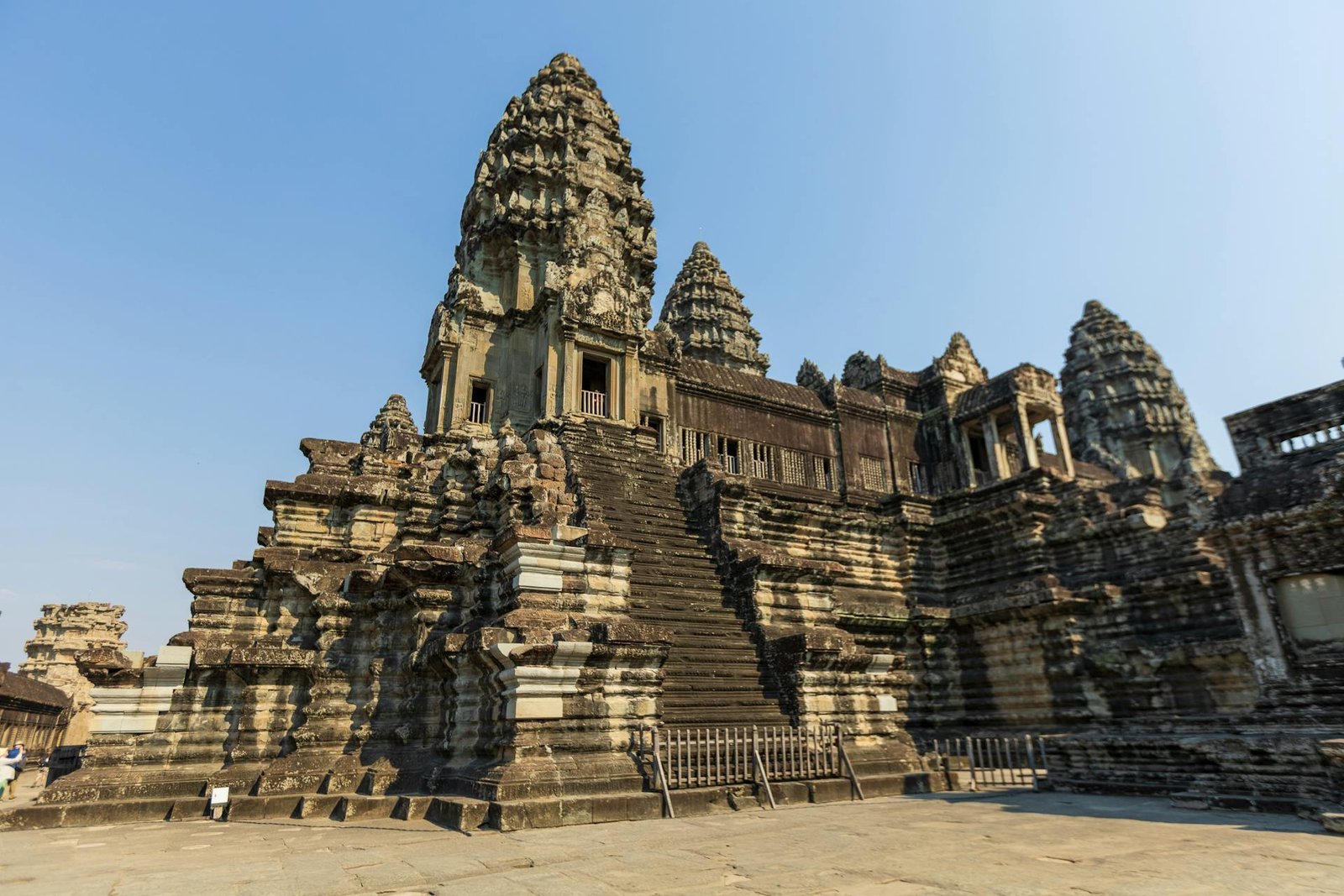
The Enigmatic Bas-Reliefs
Depictions of Hindu Mythology
The bas-reliefs of Angkor Wat are among its most captivating features, depicting scenes from Hindu mythology and historical events. The Churning of the Ocean of Milk, a central motif, illustrates the Hindu creation myth and symbolizes the eternal struggle between good and evil.
Historical Narratives
Beyond mythological scenes, the bas-reliefs also portray historical narratives, including battles and royal processions. These carvings offer invaluable insights into the political and cultural life of the Khmer Empire, providing a visual record of its history.

Astronomical Alignments
Solar and Lunar Significance
One of the most intriguing aspects of Angkor Wat is its astronomical alignments. The temple is oriented to the west, which is unusual for a Hindu temple. This orientation aligns with the equinoxes, suggesting a connection with solar cycles. The layout of the temple also aligns with lunar and solar calendars, indicating advanced knowledge of astronomy.
Theories of Celestial Mapping
Scholars have proposed various theories about Angkor Wat’s celestial mapping. Some suggest that the temple’s layout mirrors the constellation Draco, while others believe it represents a cosmic map. These theories continue to be a subject of debate and research, adding to the temple’s mystique.
Hydraulic Engineering
The Role of Moats and Reservoirs
Angkor Wat’s moat and the nearby West Baray reservoir are critical components of the site’s hydraulic engineering. These water bodies not only served as defensive structures but also played a crucial role in the irrigation system, supporting agriculture and sustaining the population.
Water Management System
The Khmer Empire’s sophisticated water management system allowed for the cultivation of rice, the staple food of the region. This system included canals, reservoirs, and moats, which helped manage water flow and prevent flooding. The efficient water management was a key factor in the empire’s prosperity.
Hidden Chambers and Passageways
Recent Discoveries
Modern technology, such as LiDAR (Light Detection and Ranging), has revealed previously hidden chambers and passageways within Angkor Wat. These discoveries have sparked new theories about the temple’s construction and use, suggesting there may still be undiscovered secrets within its walls.
Speculations and Theories
The hidden chambers have led to various speculations, including the possibility of undiscovered treasures or sacred artifacts. Some researchers believe these areas may have been used for religious ceremonies or as storage for royal treasures.
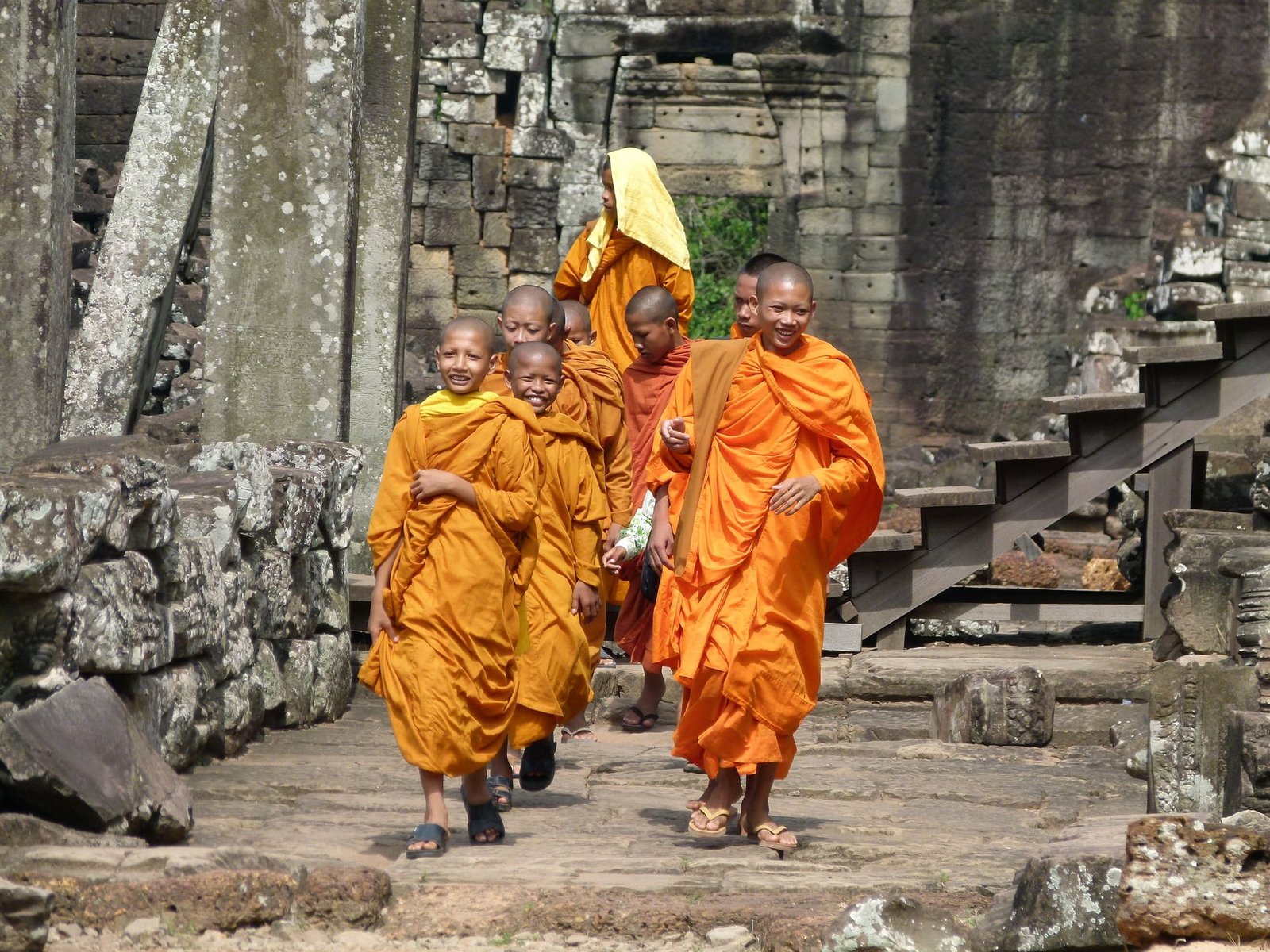
The Secret Inscriptions
Unveiling Ancient Scripts
Inscriptions found in Angkor Wat provide valuable information about the temple’s history and the Khmer Empire. These inscriptions, written in Sanskrit and Khmer, record the temple’s dedication, the king’s achievements, and the religious rituals performed.
Deciphering the Messages
Deciphering these inscriptions has been a challenging task for linguists and historians. The messages often include references to Hindu cosmology and the divine right of kings, reflecting the spiritual and political ideologies of the time.
Angkor Wat in Popular Culture
Influence on Media and Art
Angkor Wat has captured the imagination of artists, filmmakers, and writers. Its iconic silhouette has appeared in numerous films, documentaries, and artworks, often symbolizing mystery and ancient grandeur. The temple’s influence extends beyond Cambodia, becoming a global cultural icon.
Representation in Modern Literature
The fascination with Angkor Wat is also evident in modern literature. Many authors have woven the temple into their narratives, using it as a setting or symbol. This representation helps keep the temple’s legacy alive in contemporary culture.
Mysteries of the Temple’s Construction
Labor Force and Resources
The construction of Angkor Wat required a massive labor force, including skilled craftsmen, laborers, and architects. The logistics of organizing and sustaining such a workforce, along with the sourcing of materials, remain subjects of study and speculation.
Architectural Innovations
Angkor Wat’s architecture features several innovative techniques, including the use of corbelled arches and intricate carvings. The temple’s structural stability and aesthetic beauty are a testament to the advanced engineering knowledge of the Khmer people.
Mysteries of the Temple’s Construction
Labor Force and Resources
The construction of Angkor Wat required a massive labor force, including skilled craftsmen, laborers, and architects. The logistics of organizing and sustaining such a workforce, along with the sourcing of materials, remain subjects of study and speculation.
Architectural Innovations
Angkor Wat’s architecture features several innovative techniques, including the use of corbelled arches and intricate carvings. The temple’s structural stability and aesthetic beauty are a testament to the advanced engineering knowledge of the Khmer people.
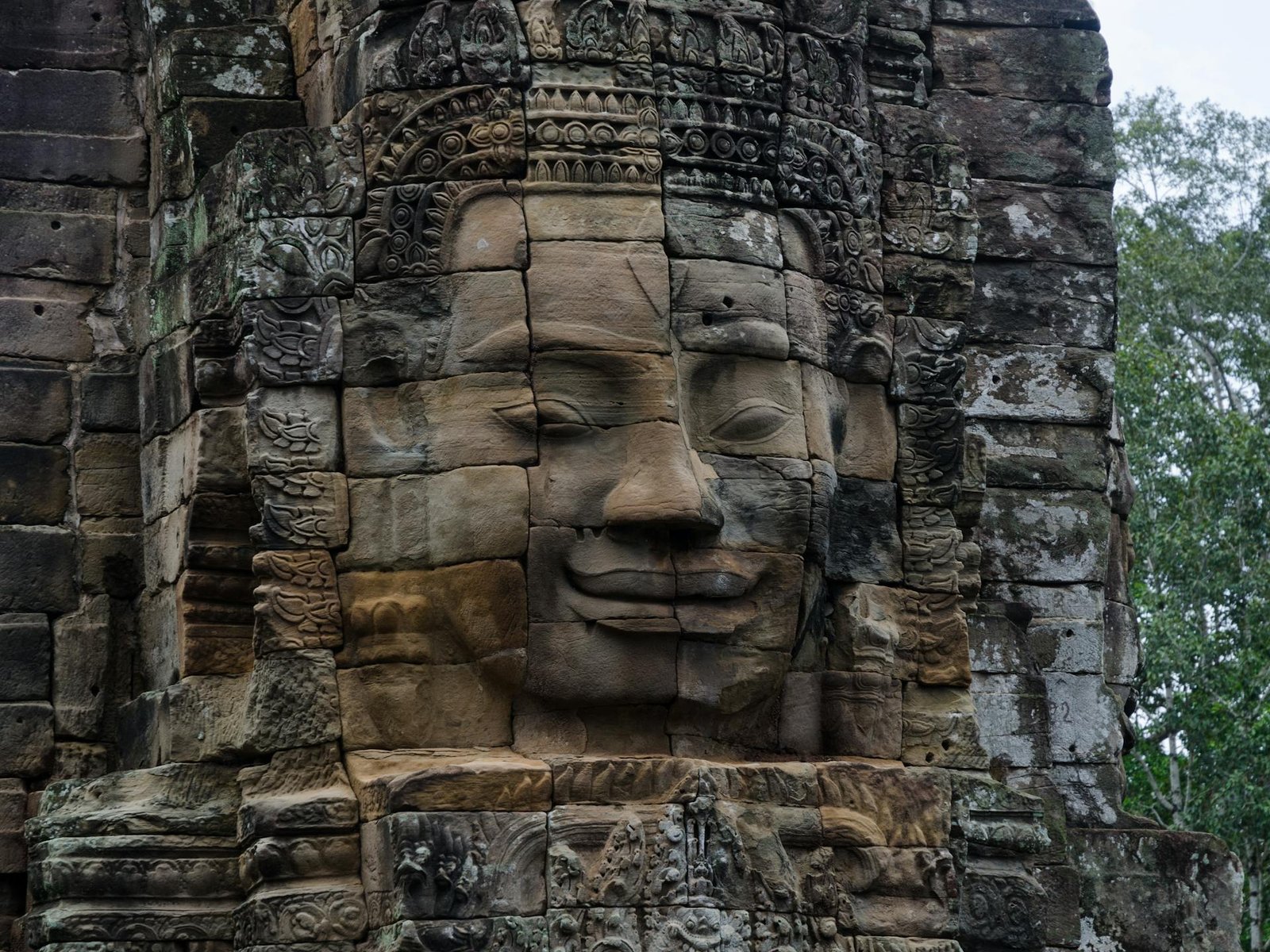
Symbolic Representations
The Role of Hinduism
The temple’s original dedication to Vishnu and its alignment with Hindu cosmology reflect the influence of Hinduism on Khmer culture. The intricate carvings and sculptures depicting Hindu deities and myths highlight the religious devotion and artistic expression of the period.
Transition to Buddhism
The gradual transition from Hinduism to Buddhism in Angkor Wat is evident in the addition of Buddha statues and the conversion of certain areas for Buddhist worship. This transition mirrors the broader religious shift in the region and underscores the temple’s enduring spiritual significance.
Angkor Wat’s Role in Khmer Civilization
Political and Cultural Hub
Angkor Wat was not only a religious center but also a political and cultural hub. It served as a venue for royal ceremonies and a symbol of the Khmer Empire’s power and sophistication. The temple’s construction and maintenance reflected the empire’s wealth and resources.
Economic Importance
The temple complex played a vital role in the economy of the Khmer Empire. The surrounding area was a center for trade and agriculture, supported by the sophisticated water management system. The economic activities around Angkor Wat contributed to the prosperity and stability of the empire.
Legends and Folklore
Mythical Origins
Local legends often attribute the construction of Angkor Wat to divine beings or supernatural forces. One popular legend suggests that the temple was built in a single night by the god Indra. Such tales add to the mystique and allure of the site.
Tales of Divine Intervention
Folklore also tells of divine interventions that protected the temple from invaders or natural disasters. These stories reflect the spiritual significance of Angkor Wat and the reverence with which it is regarded by locals and visitors alike.
The Temple’s Layout and Orientation
Sacred Geometry
The layout of Angkor Wat is based on sacred geometry, with precise measurements and alignments. The central tower and surrounding structures follow a complex plan that reflects cosmic and spiritual principles. This design emphasizes the temple’s role as a microcosm of the universe.
Orientation Towards the Sun
The temple’s orientation towards the west, traditionally associated with death and the setting sun, has intrigued scholars. This unusual feature has led to various interpretations, including connections to funerary practices and the worship of Vishnu, who is associated with the west.
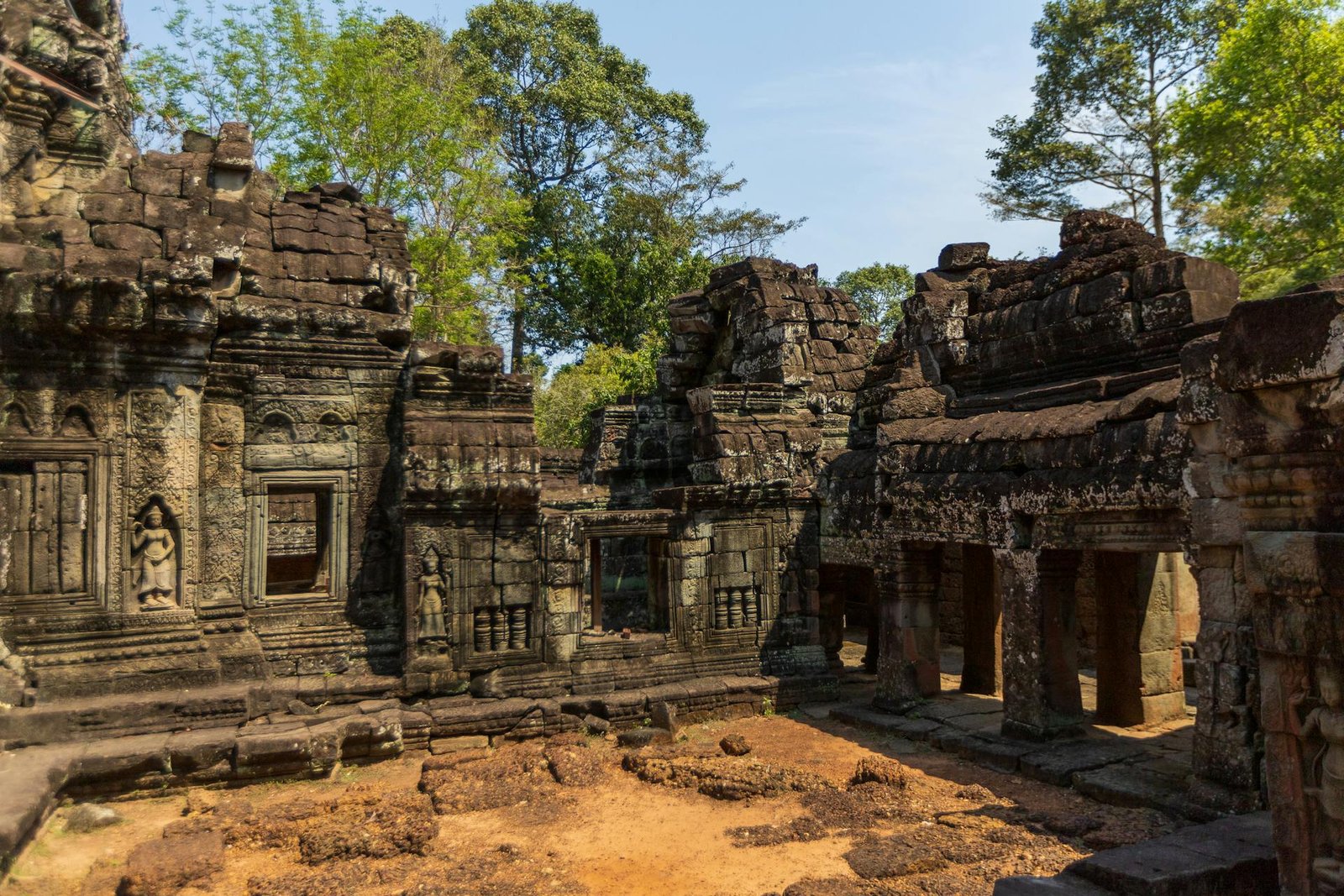
The Conservation of Angkor Wat
Challenges and Solutions
Preserving Angkor Wat requires addressing a range of challenges, including environmental damage, human impact, and the effects of time. Efforts include structural repairs, restoration of artworks, and the implementation of sustainable tourism practices to minimize wear and tear.
International Collaboration
The conservation of Angkor Wat is a global effort, involving collaboration between the Cambodian government, international organizations, and experts from various fields. These partnerships are crucial in ensuring the temple’s preservation for future generations.
Visitor Experience
Guided Tours
Visitors to Angkor Wat can explore the temple through guided tours that offer insights into its history, architecture, and cultural significance. Knowledgeable guides provide detailed explanations, helping visitors appreciate the intricacies of the site.
Iconic Spots and Photography Tips
Angkor Wat offers numerous iconic spots for photography, from the reflection in the moat at sunrise to the intricate bas-reliefs. Visitors are encouraged to explore different angles and perspectives to capture the temple’s beauty and grandeur.
Future of Angkor Wat
Sustainable Tourism
Sustainable tourism is essential for the future of Angkor Wat. Efforts are being made to manage visitor numbers, protect the environment, and preserve the site’s cultural heritage. Educating visitors about respectful behavior and conservation practices is a key component of these efforts.
Ongoing Research and Discoveries
Research at Angkor Wat continues to yield new discoveries, from previously hidden structures to insights into ancient Khmer society. Ongoing archaeological work and technological advances promise to reveal more secrets of this enigmatic temple complex.
Angkor Wat was built as a state temple and mausoleum for King Suryavarman II, originally dedicated to the Hindu god Vishnu. It also served as a political and cultural center of the Khmer Empire.
Angkor Wat is unique for its massive scale, intricate carvings, and alignment with astronomical phenomena. It is also notable for its transition from a Hindu temple to a Buddhist site.
The temple was constructed using sandstone blocks transported from distant quarries. The construction techniques included precise stone fitting and intricate carvings, showcasing advanced engineering skills.
The bas-reliefs of Angkor Wat depict Hindu mythology, historical events, and cultural narratives. They provide valuable insights into the religious beliefs and daily life of the Khmer Empire.
Preservation efforts involve structural repairs, restoration of artworks, and sustainable tourism management. International collaboration and the use of modern technology are crucial in these efforts.
Some hidden chambers and passageways have been discovered, but not all are accessible to the public. Ongoing research and conservation efforts may eventually open more areas for exploration.
